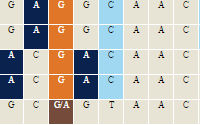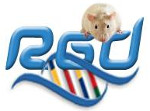Gene-Chemical Interaction Annotations Click to see Annotation Detail View
Object Symbol | Species | Term | Qualifier | Evidence | With | Notes | Source | Original Reference(s) | MMP9 | Human | tetrachloromethane | increases expression | ISO | Mmp9 (Mus musculus) | CCl4 increases expression of mmp9 mRNA in Adipor2 KO mouse liver | RGD | | Mmp9 | Rat | tetrachloromethane | increases expression | ISO | Mmp9 (Mus musculus) | CCl4 increases expression of mmp9 mRNA in Adipor2 KO mouse liver | RGD | | Mmp9 | Mouse | tetrachloromethane | increases expression | EXP | | CCl4 increases expression of mmp9 mRNA in Adipor2 KO mouse liver | RGD | | | |||||||||||||||||||||||||||||||||||||||||||||||||||||
|
|
Gene Ontology Annotations Click to see Annotation Detail View
Biological Process




















